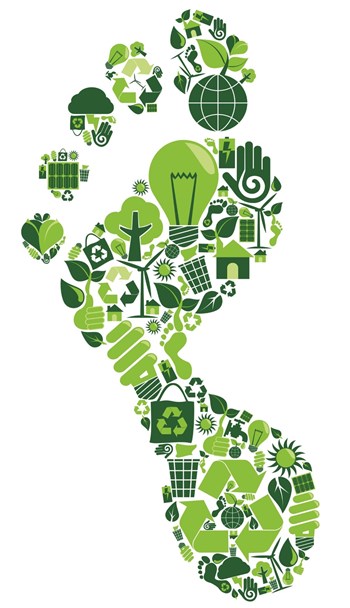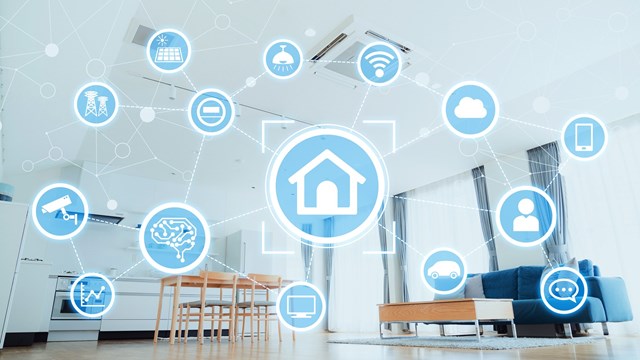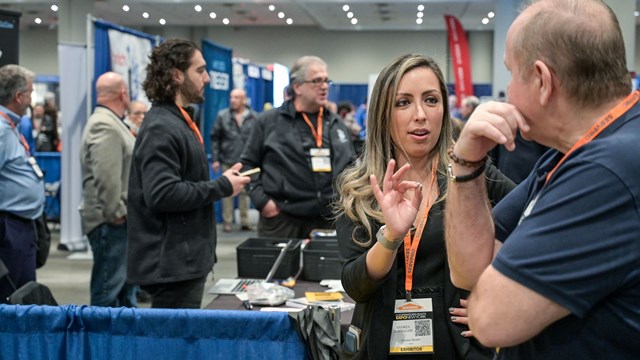
Going green doesn’t have anything to do with choosing a natural paint color for your kitchen, or planting a new bed of romaine lettuce in your community garden. But the phrase can have many different meanings and can be done across a broad spectrum. Turning off lights in rooms you’re not occupying is a small green move; installing a gigantic wind turbine in your backyard is a bigger one. Different communities throughout Florida place green practices and programming at different positions on their lists of priorities—and the steps they take depend on funding, community interest, feasibility and other factors.
A Greener State of Mind
For most Florida residents, the push to go green starts with the desire to do the right thing for the environment and for their health. Using environmentally-friendly materials may improve the air quality within your home, because the chemicals used in sources such as pressed wood have been linked with serious diseases including cancer and asthma.
And even if that doesn't compel you, “You should go green because of the savings for the people who are living in the building and for the people who own the building,” says Suzanne Cook, executive director of the Florida Green Building Coalition (FGBC), which develops and administers green building standards for the state.
By choosing energy-efficient appliances and light bulbs, owners can save a lot of money on operating costs. Add to that durable materials that reduce the need to make repairs and upgrades as frequently, and the savings will start to add up quickly. “When you’re talking about energy efficiency, technology is one of the main factors that can reduce energy consumption,” Cook says.
Small, Green Steps
Many condo owners start by doing simple tweaks, such as updating their light bulbs and plumbing fixtures, says Jennifer Easton, communications associate for the U.S. Green Building Council (USGBC). Homeowners can also use recycled materials to make their home more green, such as using salvaged wood when building a porch, setting up a composting operation or building a rain garden.
Condo owners can also save on their electric bills simply by sealing up cracks and gaps in their homes. Adding insulation to walls and ceilings and turning the heat or air conditioning down when you aren’t home or are sleeping also helps. Owners may also enroll in real time electricity pricing programs or in net metering programs for installing solar panels. Check out Florida Power & Light for some available energy incentives at www.fpl.com/residential/savings /net_metering/index.shtml.
One can also look to Progress Energy, which offers financial incentives and services for a wide variety of energy efficiency measures and equipment upgrades in existing buildings and new construction, including HVAC, motors, lighting, cool roofs, green roofs, thermal energy storage, and window films. The utility also provides cost-shared services for existing buildings including ceiling insulation upgrades, duct check and repair, rooftop air conditioner re-commissioning and PTAC/PTHP coil steam-cleaning when walk-through audits suggest these measures.
Condo owners should double-check that their home is completely insulated, fixing all the leaks around windows and doors so that the air conditioning isn’t working any harder than it has to, Cook says. The fix can be as simple as shoving a towel next to the door or window to mask any cracks or leaks—or you can actually install foam insulators to prevent air leaks.
“Here’s where the cost savings come in,” Cook says. “When you address those things and fix the leaks. No size air conditioner is going to help if you’re blowing all your cool air out of your unit.”
Windows & More
One of the most important—and also the simplest—fixes is to examine your windows. Specialty coatings on the panes of the windows can reduce the volume of UVA and UVB rays that enter through the window into your home, cutting back on the work your air conditioner needs to do in order to cool your unit.
If your building allows it, you can switch out your single pane windows and get multi-pane windows, which will insulate your unit from the sun, in addition to doing a better job keeping the cool air inside your home.
If your building won’t budge on the windows, you could always add blinds which have a form of light control already built into them. The blinds can be encased inside two window panes, which will reduce dust and lower your chances of airborne pollutants entering your home.
Money can also be saved via water conservation. Swap your shower heads and toilets for low-flow shower heads and low-flow toilets to save on your water bills. Also, look for washing machines that have the Energy Star certification, which can play a big role in cost savings.
Green & Growing
The trend to go green has gone viral, and is expected to continue growing. Last year, green homes in the United States accounted for 17 percent of the overall residential construction market, according to the National Association of Home Builders' Green Home Buildings and Remodeler Study. That number is expected to grow to between 29 percent and 38 percent by 2016.
In monetary terms, this equates to a five-fold increase, from $17 billion in 2011 to up to $114 billion in 2016, based on the five-year forecast for overall residential construction. By 2016, 34 percent of remodels are expected to be primarily working with eco-friendly products, which is a 150 percent increase since last year.
In light of those figures, Florida-area builders, contractors and designers should also be brushing up on their eco-friendly techniques. Florida’s per-household electricity consumption is among the highest in the country—due mostly to the hot weather here. According to the U.S. Census Bureau, Florida builds an average of 160,000 new homes annually—and it ranked third in population in 2010. So here especially, the demand and use of energy-efficient appliances and air conditioners is high.
Part of the trend toward remodeling, re-using and recycling has to do with the money saved by not buying new, says Harvey Bernstein, vice-president of Industry Insights and Alliances, McGraw-Hill Construction.
“Despite the drastic downturn in housing starts since 2008, green has grown significantly as a share of activity, indicating that the green market is becoming an important part of our overall economic landscape.”
It’s not hard to see why going green has become so popular. “It’s a decision that saves building owners and tenants money through decreased utilities and operating costs,” says Easton. “It creates more healthful and enjoyable indoor environments for occupants and it conserves energy and resources.”
Overall, going green can create a better living environment for everyone involved, say the pros. And as more people are demanding greener materials, methods, and amenities, it pays off for both developers and HOA boards to integrate green into their master plans.
For example, the Pinnacle at Avery Glen in Sunrise, Florida, recently transformed itself into luxury-styled, affordable apartments via its commitment to going green.
The $26 million, 140-unit development offers Energy Star lighting packages, Energy Star ceiling fans and appliances, high-efficiency air conditioning systems, enhanced building insulation, low VOC paints, water-saving plumbing fixtures and impact-resistant windows and doors. More than 80 percent of the construction waste was recycled.
Due to its green achievements, the Pinnacle received the Florida Green Building Coalition’s Bronze certification—and it has no problems filling all its units.
Another recent certification goes to Progresso Point in Fort Lauderdale. This 76-unit affordable housing project of the Broward County Housing Authority and Reliance Housing Foundation is the first building certified under the Florida Green Building Coalition’s Green High-Rise Residential designation.
The high-rise condominium project recycled more than 75 percent of its construction and demolition waste, and its units are 50 percent more efficient than Florida Building Code requires. It features the incorporation of Energy Star appliances, dual flush toilets, low flow faucets and fixtures, tankless water heaters, programmable thermostats, and Energy Star qualified lighting in all open and common areas. Other green features include minimizing volatile organic compounds (VOCs) through the proper selection of materials and finishes throughout, and use of drought tolerant landscaping that reduces use of potable water for irrigation by more than 75 percent.
It doesn’t have to be all or nothing, however. You can pick and choose eco-friendly changes that make sense for your building or for your unit.
Simply sealing the windows will lower your heating and cooling bills. Getting an energy-efficient washing machine and dishwasher will also lower your homeowner bills. You can get your water bills down by finding appliances that use less water or a lower water flow. And even changing your shower head to a low-flow shower head will also lower your water bill without making you spend a lot to get the savings started.
More Than Money
It isn’t all roses and butterflies, however. There are some obstacles that building owners, developers and even unit owners will face if and when they decide to make some eco-friendly changes. Most eco-friendly options cost more initially than their standard counterparts: whether you’re researching washing machines, dishwashers, flooring or building materials.
But the biggest challenge is the speed at which the green technology is moving forward, Cook says. “The challenge is the quickness of technology advances and education,” she says. “Keeping up with what the best technology practice is tricky.”
So instead of going out and buying the greatest, most expensive, latest technology devices, Cook says she encourages that condo owners, building owners and developers to educate themselves first.
“There are inexpensive things that have huge paybacks,” she says. These may include changing your light bulbs for the eco-friendly versions and sealing your air conditioner with mastic instead of duct tape, which can fall apart faster.
Help is Here
The Florida Green Building Coalition aims to help residents with their eco-friendly renovations, and one major way they contribute is by offering a Florida Green Building Coalition Green Home Retrofit Guideline, which you can download at www. floridagreenbuilding.org. The web page contains a reference guide and a checklist to help you with eco-friendly energy, water, health, material and durability information. They even offer third-party verification to double-check that the efficiency improvements you’ve done have been incorporated into your home—which is a fantastic tool for resale.
If you plan on making changes to decrease the amount of water you’re using, contact officials at the Florida Water Star Program, which is a third party certification program aimed to encourage water efficiency through appliances, plumbing fixtures, landscapes and irrigation systems.
And before paying for any energy changes, educate yourself about the Florida Solar Energy System incentives program, which is a state program providing rebates for the installation of qualified solar energy systems.
Check out the USGBC’s green home guide at www.greenhomeguide.com to see a valuable Q&A with green home professionals, in addition to a searchable feature that will allow you to locate green home professionals in Florida. The LEED rating system should also help you figure out your best buys. It rewards new and existing commercial buildings using a tiered (silver, gold, platinum) rating system.
It’s clear that green is finally the new black. Get with the trend.
Danielle Braff is a freelance writer and a frequent contributor to The South Florida Cooperator.






Leave a Comment